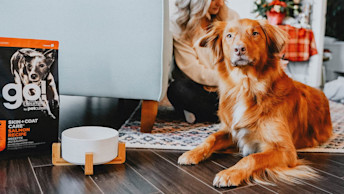June 29, 2021
How and Why You Should Crate Train Your Dog

In the United States, nearly 40% of people are dog owners. While you love your pet and want the best for them, sometimes the necessary thing to do is to crate train your dog.
When you're deciding on whether or not dog crate training is right for your dog, you might have a lot of unanswered questions, like why is crate training a dog important? Or, how do you start crate training?
The good news is that this article will aim to answer those questions and more. Keep reading to learn more about why crate training is healthy for your dog.
What Is Crate Training?
Crate training refers to teaching or training your dog to retreat to its crate when necessary or when you want them to be confined to its crate. Crate training teaches them that their crate is a haven for them, and not something to be feared.
There are a variety of types of crates to choose from, such as plastic or metal, and even luxury crates. You'll need to take inventory of your dog's future size to make sure that they fit snuggly in the crate with plenty of space.
Why Is Crate Training Important?
Some owners feel a sense of guilt for crate training their dogs, but it's not necessary to do so. In fact, a crate can be a safe place for a dog for a few reasons.
Crates are a perfect way to help your puppy learn potty training. When a dog is confined to their crate they hold its bladder. This means there's less mess for you to clean up and when you remove them from their crate, they're allowed to use the bathroom outside.
Dogs are naturally "den" creatures, meaning that in the wild they seek out small refuge spaces. Mother canines give birth in dens and only retreat for water or food. Having a safe spot for your dog to retreat to when they feel anxious, scared, or just need some quiet time, offers your dog peace of mind.
If you have a particularly nosy dog, especially at nighttime, providing sleeping space in their crate gives can give you a sound night's sleep as well. Crate training at night means you're not worrying about your dog raiding your trash can or tearing up your furniture.
And finally, for people that are gone during the day, a crate is a place where a dog can rest and relax without you worrying that they're tearing up the house.
If you need to take your dog anywhere, once they become comfortable and compliant about being in their crate, it will make traveling much smoother.
Crate Train Your Dog: 5 Necessary Steps
So how do you crate train a dog successfully? What are the proper steps to ensure that your dog feels a sense of safety and solitude within their crate? Here are 5 steps you should follow if you want your crate training to go well.
1. Puppy Meets Crate
Once you've selected your crate, it's time to introduce your puppy to its crate! It's important to remember that dogs of any age can be crate trained, not just puppies, so introducing your dog to their crate, is one of the most important steps.
You'll also need to decide where to put your crate. Do you want your dog in your view or a different room altogether?
2. Create a Positive Space
Your dog must understand that this is a positive space for them. Everything you do needs to ensure and encourage your dog that this is a place where they're safe from harm.
Start by feeding your dog in their crate. Keep the door open so they feel free to come out if they need to. If your dog is hesitant to enter, place kibble pieces right outside the crate and continue to put them deeper inside until your dog follows.
As you work on getting your dog comfortable, close the door for short periods of time, continue to feed kibble pieces as a food reward, and give positive reinforcement. You can even play small games like fetch or bring toys inside the crate.
It's also important to train your dog while they're calm and not in a playful mood. If they're feeling playful, they won't cooperate.
3. Never Punish
Dogs and puppies especially do get into trouble. While there are ways to properly discipline a dog, putting them in their crate should never be a punishment. It contradicts the idea that a crate is a safe place.
4. Extend Time
Once your dog seems somewhat comfortable with the crate, you can start extending the time they're locked in. For example, try closing the door for several minutes and then coming back. Your dog may bark, but you mustn't give in, or they will learn that when they bark crate time is over.
The amount of time you decide should be whatever you think is best for your dog and the situation.
5. Move Ahead Slowly
Especially with older dogs who might not be used to crates, it's important to go slowly. Don't rush crate training with your dog or crate training your puppy. The more intentional you are with making sure your dog feels comfortable, the better your situation will be.
Crate Training Your Dog
The decision to crate train your dog is a wise one. Crates provide a space that's all their own and you can feel confident and calm that your belongings will not be destroyed by behavior or accidents. What steps do you need to take today to crate train your dog?



